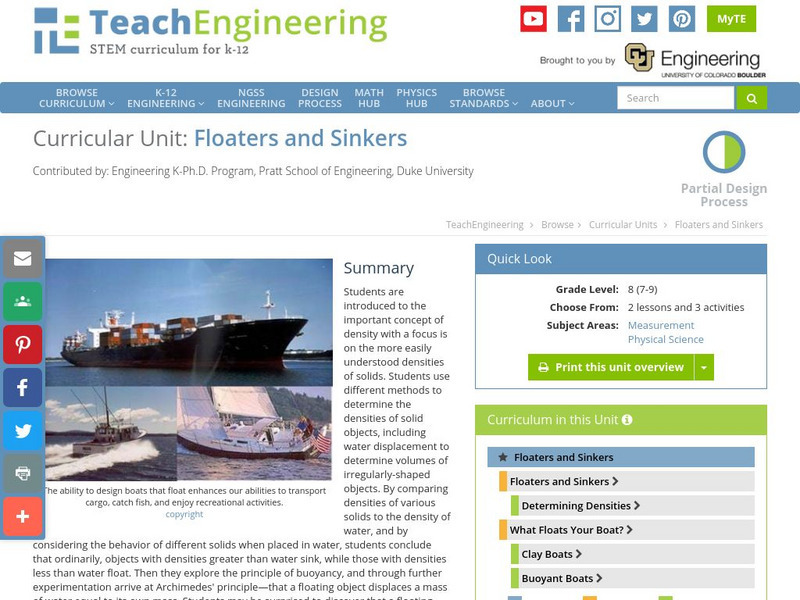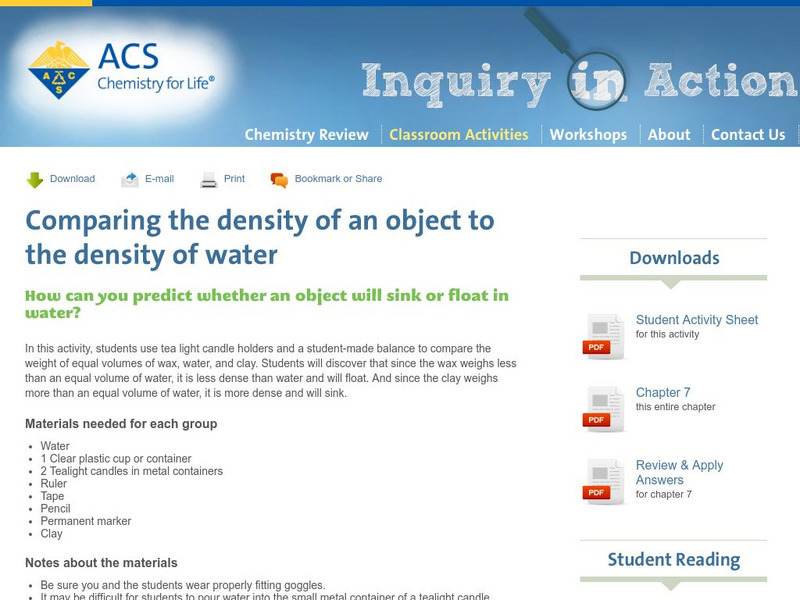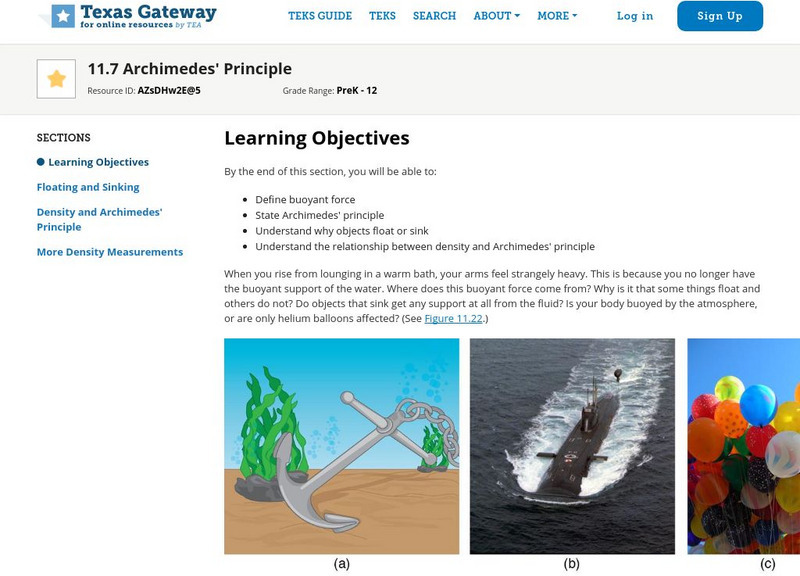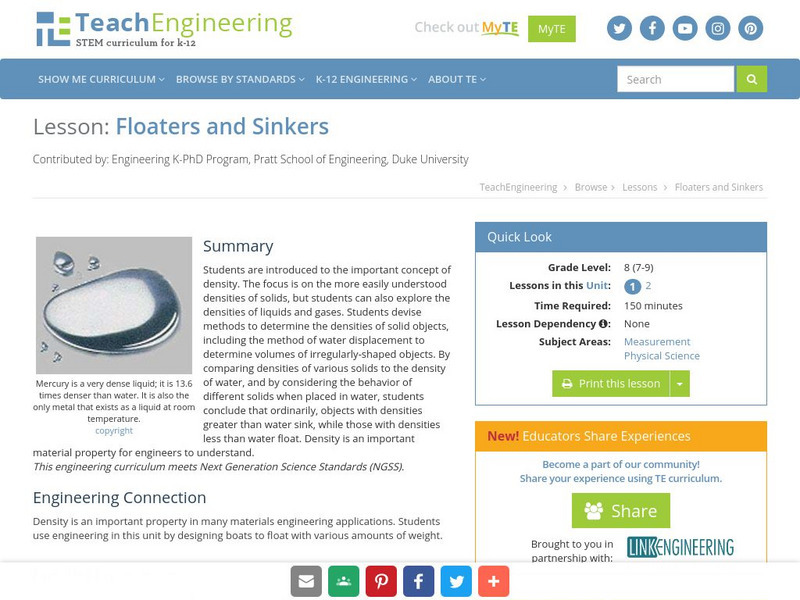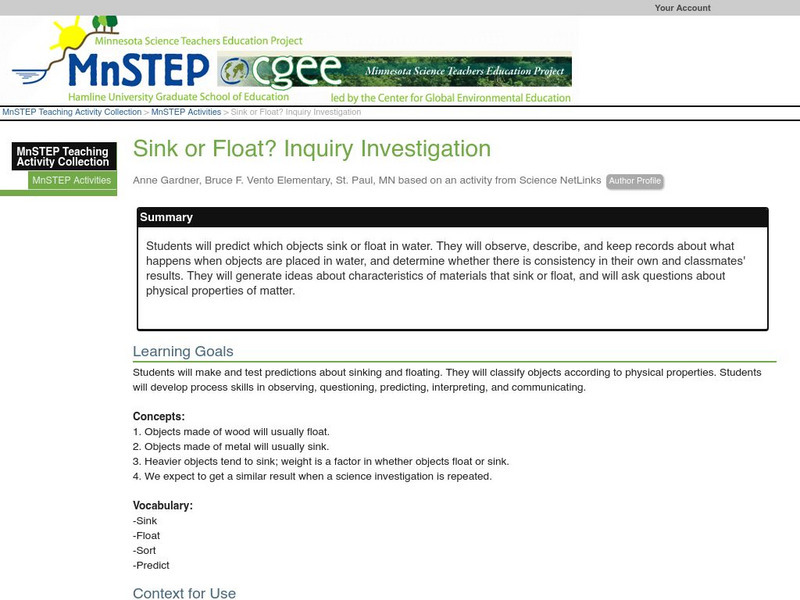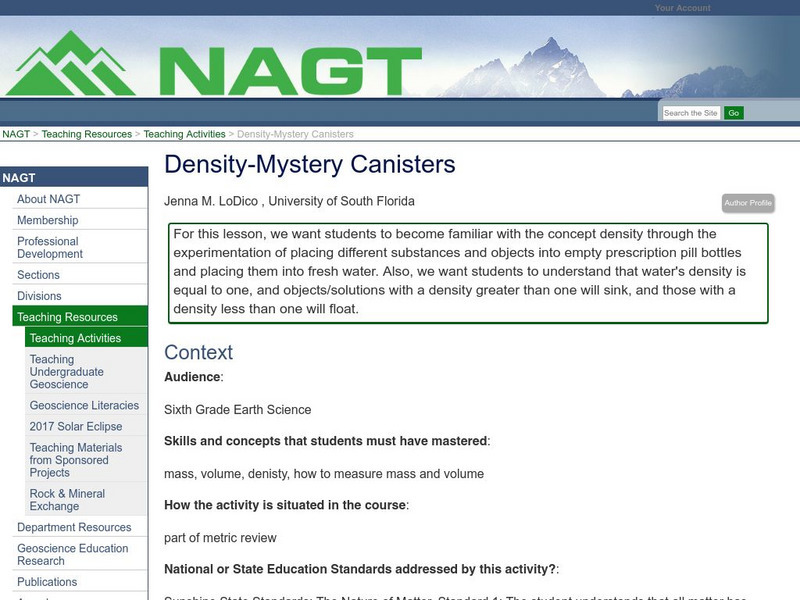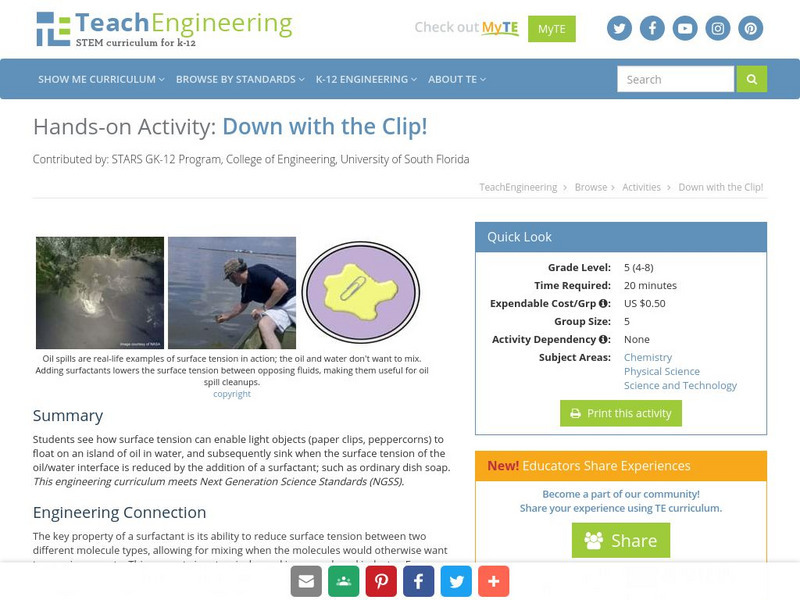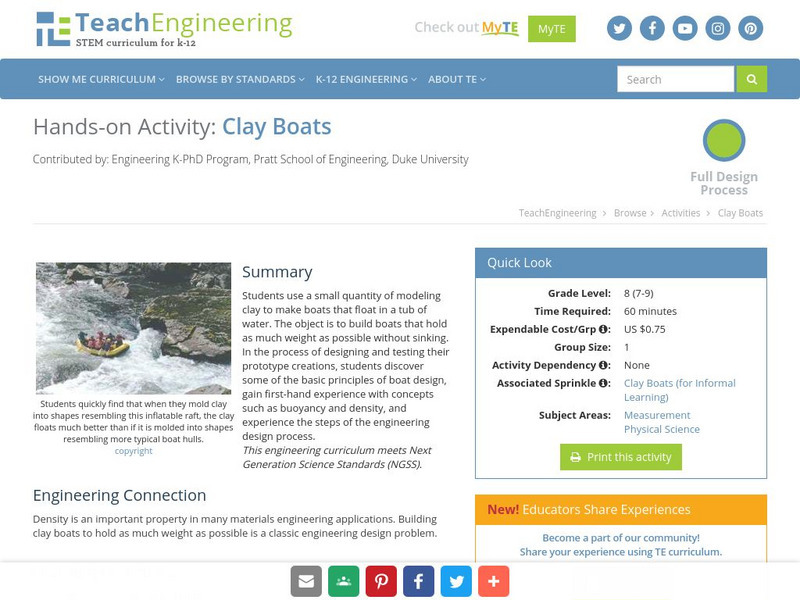Hi, what do you want to do?
DiscoverE
Water Sampling
What is the best way to test water quality? Using plastic bottles, scholars create monitoring sensors to test water quality. Creating three different sensors allows individuals to measure water quality at different water levels.
Curated OER
Student Exploration: Density Laboratory
For this density laboratory worksheet, learners complete 2 prior knowledge questions, then use the "Density Laboratory Gizmo" to complete several activities, answering short answer questions when finished.
Science Education Resource Center at Carleton College
Serc: Investigating Floating and Sinking: Density
This investigation introduces the concepts of volume, mass, and density and how they interact. Students will make predictions of whether an object will float or sink after finding mass and volume of an object.
Better Lesson
Better Lesson: Floating and Sinking Sorting in Science
Students sort objects according to whether they sink or float.
TeachEngineering
Teach Engineering: Floaters and Sinkers
Through this curricular unit, students are introduced to the important concept of density. The focus is on the more easily understood densities of solids, but students may also explore the densities of liquids and gases. Students devise...
American Chemical Society
Inquiry in Action: Compare the Density of an Object to the Density of Water
In this activity, students use tea light candle holders and a student-made balance to compare the weight of equal volumes of wax, water, and clay. Students will discover that since the wax weighs less than an equal volume of water, it is...
Science Education Resource Center at Carleton College
Serc: Density of Solid Objects
In this science inquiry, students investigate whether volume or density of objects determine the floating or sinking in water. Using a rock and a block of wood teachers engage students in the discussion of density, mass and volume.
Science Education Resource Center at Carleton College
Serc: Mn Step: Solid and Liquid Density Investigation
For this activity, students investigate whether objects and liquids float or sink when placed in water. As they proceed, they will develop an understanding of what density is. Student handouts are provided.
Science and Mathematics Initiative for Learning Enhancement (SMILE)
Smile: Density in Relation to Float and Sink
Learners find the densities of objects based on sinking or floating in this activity that demonstrates Archimedes Principle.
Texas Education Agency
Texas Gateway: Ap Physics: Fluid Statics: Archimedes' Principle
By the end of this section, you will be able to define buoyant force, state Archimedes' principle, understand why objects float or sink, and understand the relationship between density and Archimedes' principle.
Science Education Resource Center at Carleton College
Serc: Investigating Density in Solutions: How Can You Make an Egg Float?
In this activity, students will learn about density by determining how to make an egg float in water. By the end of the activity, students will understand that density and weight are different and that density matters in floatation. They...
American Chemical Society
Inquiry in Action: Changing the Density of an Object: Adding Material
In this activity, students see that a can of regular cola sinks while a can of diet cola floats. As a demonstration, bubble wrap is taped to the can of regular cola to make it float. This high-volume but light-weight material increases...
Utah Education Network
Uen: Sink or Float
Predict and test everyday objects as to whether they sink or float.
American Chemical Society
Middle School Chemistry: Density: Sink and Float for Solids
Students determine whether an object will sink or float by comparing its density to the density of water.
TeachEngineering
Teach Engineering: Floaters and Sinkers
This lesson introduces students to the important concept of density. The focus is on the more easily understood densities of solids, but students can also explore the densities of liquids and gases. Students devise methods to determine...
PBS
Pbs Learning Media: Sesame Street: Sink or Float Educator Guide
This is an educator's guide for a unit on things that sink or float. It includes lesson plans, experiments, and activities. Students apply the scientific method as they investigate whether objects sink or float.
Science Education Resource Center at Carleton College
Serc: Mn Step: Sink or Float? Inquiry Investigation
For this activity, young scholars make predictions about whether different objects float or sink, then test them. They are asked to record their observations and results for each, and compare their results to others'.
National Association of Geoscience Teachers
Nagt: Density Mystery Canisters
Learners experiment with items that sink or float, and learn that water's density is equal to one, and objects/solutions with a density greater than one will sink, and those with a density less than one will float.
TeachEngineering
Teach Engineering: Down With the Clip!
Students see how surface tension can enable light objects (paper clips, peppercorns) to float on an island of oil in water, and subsequently sink when the surface tension of the oil/water interface is reduced by the addition of a...
Center of Science and Industry
Cosi Columbus: Buoyant Bubble [Pdf]
Learn about density in this hands-on science experiment. Includes full list of materials, procedures, and scientific explanation of what makes an object float or sink. [PDF]
Alabama Learning Exchange
Alex: What's the Matter: A Sinker or Floater?
Students will explore matter that sinks or floats when submerged in water and that matter is categorized as either a sinker or a floater. Students will work actively in small, cooperative learning groups as well as gather in a whole...
TeachEngineering
Teach Engineering: Clay Boats
Each student uses a small quantity of modeling clay to make a boat that will float in a tub of water. The object is to build a boat that will hold as much weight as possible without sinking. In the process of designing and testing their...









